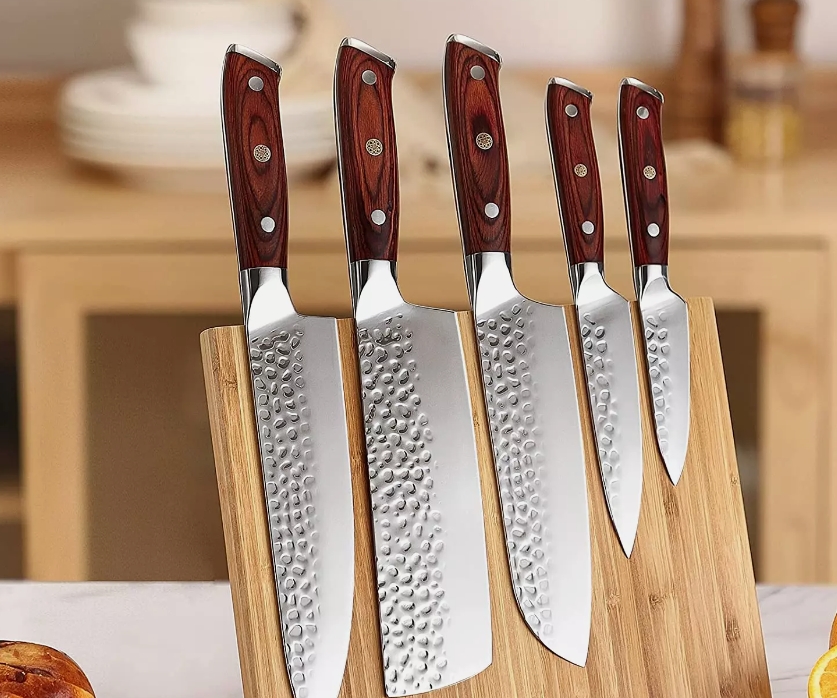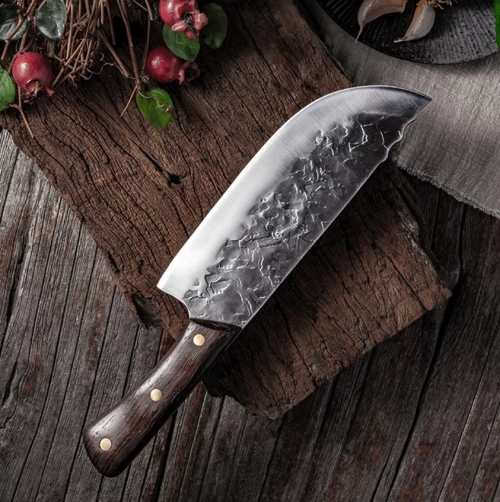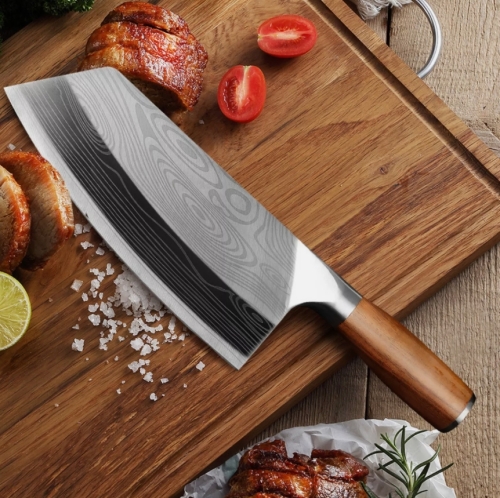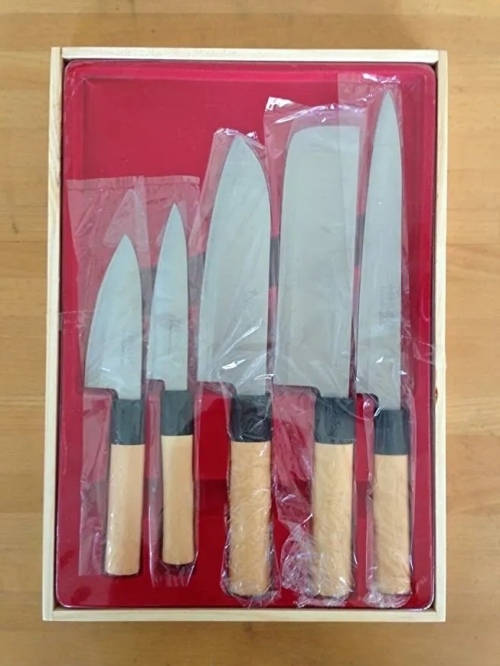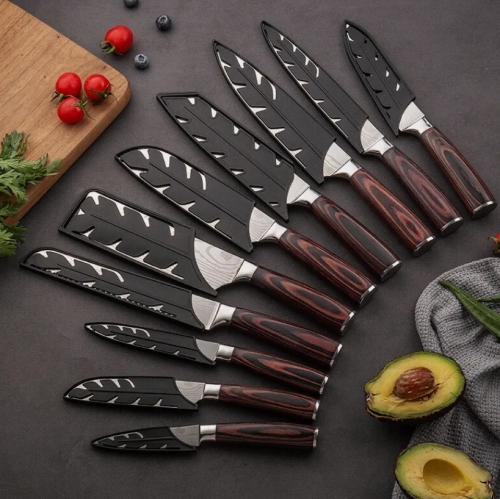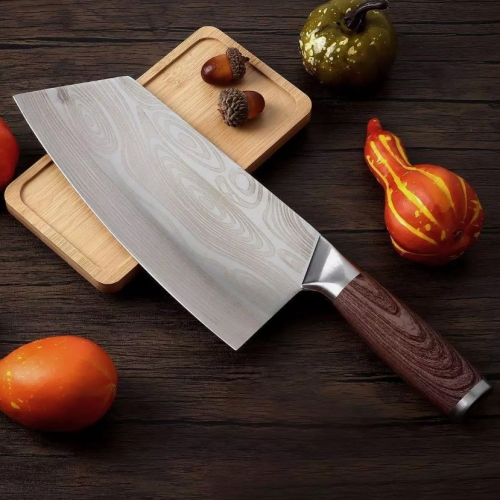Kitchen knife is one of the indispensable tools in the kitchen. Its shape is simple and practical, the knife body is wide, the blade is sharp, suitable for all kinds of cutting work. In everyday cooking, kitchen knives are often used to handle raw ingredients, such as cutting meat, slicing vegetables, and even mincing spices. Its versatility makes it the tool of choice for most homes and restaurants.
There are many kinds of kitchen knives with different materials and techniques. From traditional steel knives to modern stainless steel and ceramic knives, each material has its own advantages and disadvantages. Steel kitchen knives require regular maintenance, but because of their sharpness and durability are favored; The stainless steel knife has become the new favorite of many families because of its corrosion resistance and easy cleaning. Ceramic knives are favored for their lightness and lack of rust, and although relatively fragile, they are very effective in handling fruits and vegetables.
When using a kitchen knife, skill cannot be ignored. A skilled cook can cut in a way that maximizes the freshness and nutrition of the ingredients. The posture, strength and tilt Angle of the cutting tool directly affect the cutting effect. In the maintenance of knives, regular sharpening and correct cleaning are also important steps to ensure the long-term use of kitchen knives. After use, it should be cleaned in time to avoid rust of the blade, and avoid collision with other hard objects to avoid damage to the blade.
From a cultural point of view, the kitchen knife is not only a tool, it also represents a lifestyle and food culture. Knife in hand, food on the table, this familiar scene plays out in every household kitchen. For people who love cooking, the kitchen knife is their loyal partner in creating food, accompanying them through one cooking moment after another.

